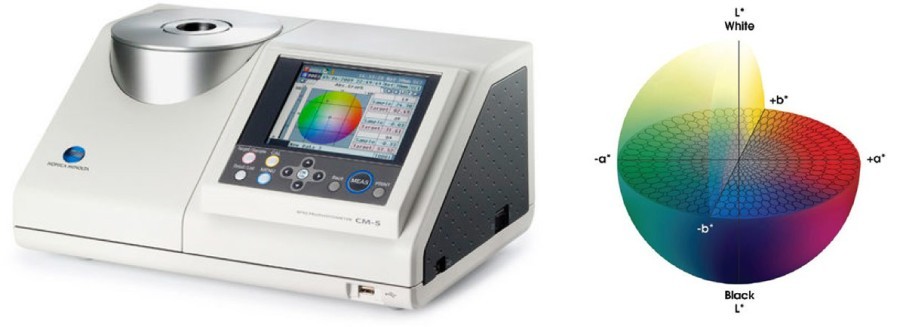Measuring Color Shade
In measuring a color’s shade, spectrophotometers measure the reflectance of light from a colorant rather than the light that passes through it. The entire visible spectrum of light is transmitted onto the colorant, then the instrument measures which color wavelengths are reflected and which are absorbed, giving empirical data on both the hues and brightness of the colorant.

In order to measure these results, a three-dimensional model with X/Y/Z coordinates can accurately map the exact hue with data that allows us to replicate it exactly.
The three-dimensional mapping configuration with X/Y/Z coordinates is referred to as the International Commission on Illumination (CIE) L.A.B. Color Space. It measures the luminance of the reflected color wavelengths, both red to green and blue to yellow. In the L.A.B. Color Space, all of the colors in the visible spectrum can be represented throughout the model with exacting precision. This is the type of in-depth precision that eliminates any sort of guesswork, instead of allowing us to rely on data in both replicating existing colorants and creating new ones.

Delta E is a metric for understanding how the human eye perceives color difference. The term delta comes from mathematics, meaning change in a variable or function. The suffix E references the German word Empfindung, which broadly means sensation.1
1. Delta E 101. Retrieved 11 October 2018 from http://zschuessler.github.io/DeltaE/learn/.
